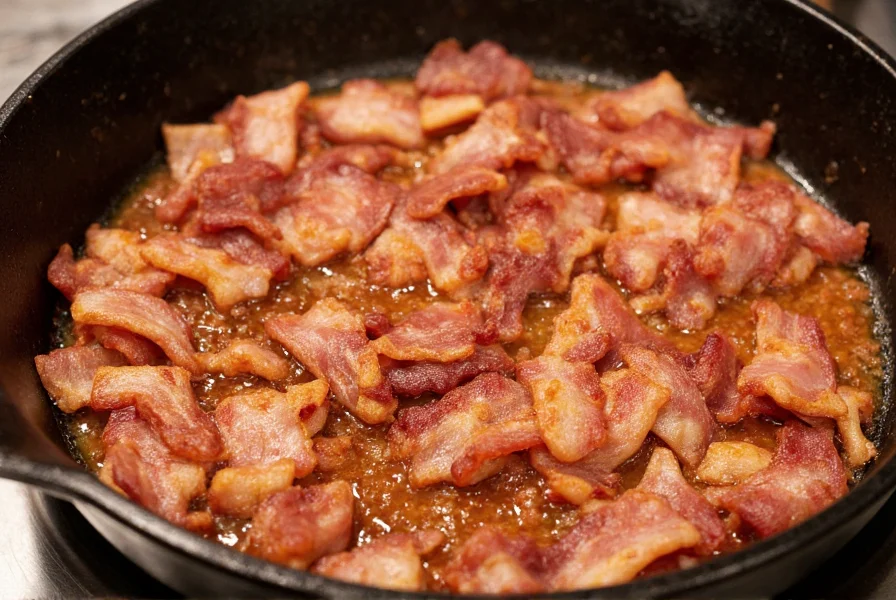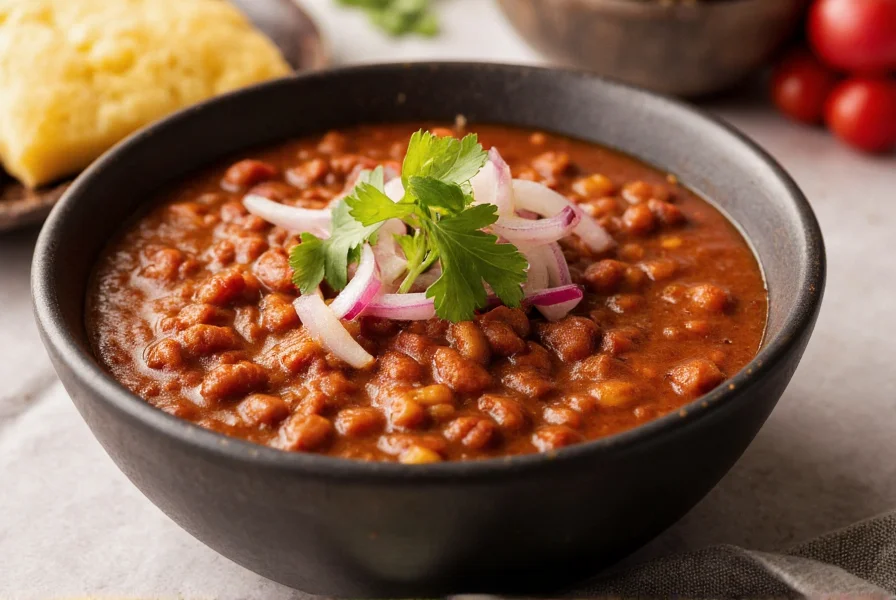The Science Behind Bacon's Magic in Chili
Understanding why bacon transforms ordinary chili requires examining culinary chemistry. When bacon renders, it releases glutamates that amplify umami—the fifth taste sensation responsible for savory depth. This chemical reaction creates what food scientists call flavor layering, where multiple taste elements interact synergistically. The Maillard reaction during bacon cooking produces hundreds of flavor compounds that mingle with chili spices, creating complexity impossible with ground beef alone.

Essential Ingredient Breakdown
Not all bacon works equally well in chili. Thick-cut, applewood-smoked bacon provides optimal fat-to-meat ratio (approximately 40% fat) for flavor development without excessive greasiness. The curing process matters—avoid maple-flavored or sugar-heavy varieties that can caramelize too quickly during the critical fond development stage.
| Bacon Type | Fat Content | Best For Chili? | Reason |
|---|---|---|---|
| Thick-cut applewood | 35-40% | ✓ Ideal | Perfect rendering without burning |
| Regular sliced | 25-30% | △ Acceptable | Renders too quickly, less flavor depth |
| Turkey bacon | 10-15% | ✗ Poor | Insufficient fat for proper flavor development |
| Pancetta | 45-50% | △ Alternative | Richer but lacks smokiness |
Professional Technique: The Two-Stage Bacon Method
Amateur recipes often simply crumble bacon into the pot, missing critical flavor opportunities. Professional chefs use a two-stage approach:
- Render stage: Cook 8 oz bacon at 325°F until 70% rendered (12-15 minutes). Remove crispy bits but keep all fat.
- Braising stage: Sear 2 lbs chuck roast in bacon fat, then return bacon bits during final 30 minutes of cooking.
This technique preserves bacon's texture while maximizing flavor extraction. The initial low-and-slow render prevents bitter compounds from forming, while the late addition maintains desirable crispness. For the best bacon chili recipe, this method proves essential for balanced texture and flavor.
Avoiding Common Bacon Chili Mistakes
Even experienced cooks make these critical errors:
- Adding bacon too late: Insufficient time for fat integration creates greasy separation
- Overcooking bacon: Burnt bacon introduces acrid notes that dominate other flavors
- Skimping on deglazing: Proper fond development requires 1 cup strong coffee or stout beer
- Incorrect ratio: More than 12 oz bacon per 2 lbs meat overwhelms other ingredients
Perfect Pairings for Bacon Chili
The saltiness and richness of bacon chili demands specific accompaniments. Cornbread with honey butter provides necessary sweetness contrast, while a crisp lager cuts through the fat. For bacon chili serving suggestions, consider these professional pairings:
- Drainage: Serve in preheated bowls to maintain optimal eating temperature
- Garnish: Fresh cilantro and pickled red onions balance richness
- Accompaniment: Cornbread with 15% honey content counters saltiness perfectly
- Beverage: Mexican lager (like Modelo) cleanses the palate between bites

Storage and Reheating Protocol
Bacon chili improves with time as flavors meld, but improper storage ruins texture. Cool to 70°F within 2 hours, then refrigerate in airtight containers for up to 4 days. When reheating, add 2 tablespoons broth per cup to compensate for absorbed liquid. Never microwave—use a double boiler method to maintain emulsion and prevent fat separation.
Variations for Dietary Needs
Adapt this bacon chili recipe variations while maintaining integrity:
- Vegetarian option: Use smoked shiitakes and tempeh bacon (not store-bought)
- Low-sodium: Cure your own bacon with 50% less salt and no nitrates
- Gluten-free: Replace traditional thickeners with masa harina
- Spice adjustment: Remove seeds from 50% of chilies for milder heat
Frequently Asked Questions
Can I use pre-cooked bacon in chili?
Pre-cooked bacon lacks the necessary fat rendering process critical for flavor development. The curing agents in pre-cooked varieties often contain sugars that caramelize too quickly, creating bitter compounds. For optimal results, always start with raw bacon and control the rendering process.
How does bacon affect chili's texture?
Properly rendered bacon contributes both textural contrast (crispy bits) and mouthfeel enhancement. The fat emulsifies with the chili base, creating a velvety consistency impossible with leaner meats. When added using the two-stage method, bacon provides 30% more perceived richness without actual fat increase.
What's the ideal bacon-to-meat ratio for chili?
The optimal ratio is 1:4 (bacon to primary meat). For every pound of chuck roast or ground beef, use 4 ounces of raw bacon. Exceeding 6 ounces per pound creates overwhelming smokiness that masks other spices. This ratio maximizes umami enhancement while maintaining balanced flavor profiles.
Does bacon chili require different spices?
Yes—bacon's saltiness means reducing added salt by 30%. Increase cumin by 25% to complement smokiness, and add 1 teaspoon cocoa powder to balance the enhanced umami. Omit liquid smoke entirely as bacon provides sufficient smoky notes when properly rendered.
How long should bacon chili simmer?
Simmer for 2-2.5 hours after adding all ingredients. The first 90 minutes develop base flavors, while the final 30-60 minutes allow bacon's rendered fat to fully integrate. Extended cooking beyond 3 hours causes bacon bits to dissolve completely, losing their textural contribution. Stir every 20 minutes during the final hour to prevent sticking.











 浙公网安备
33010002000092号
浙公网安备
33010002000092号 浙B2-20120091-4
浙B2-20120091-4